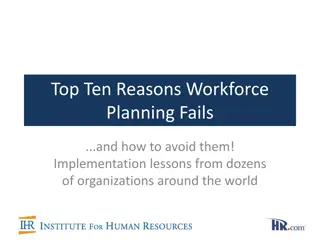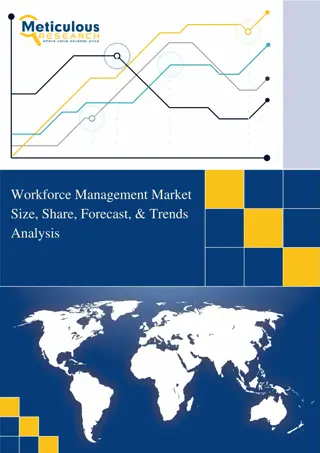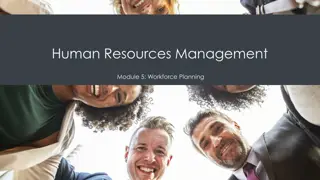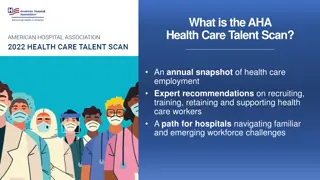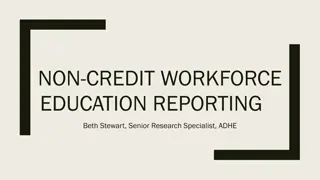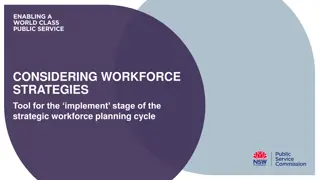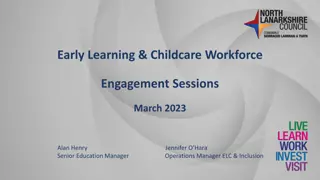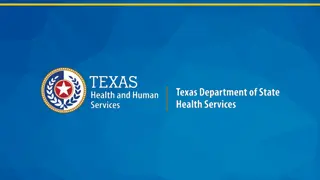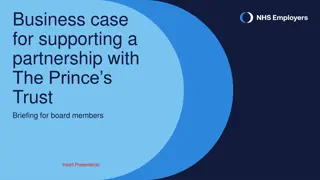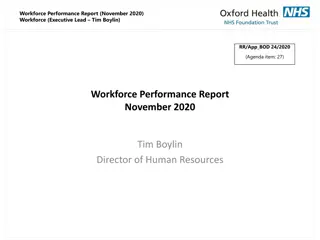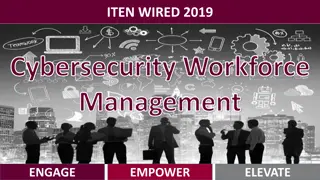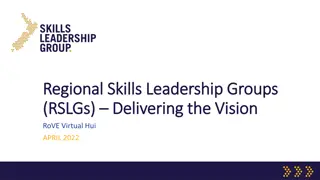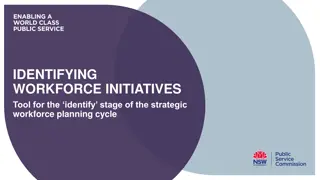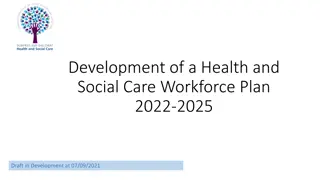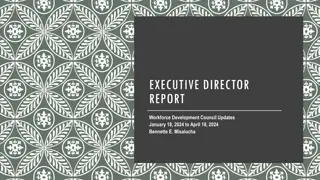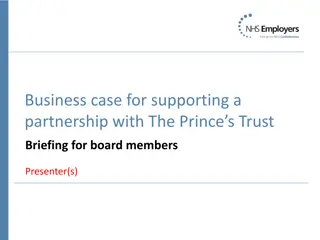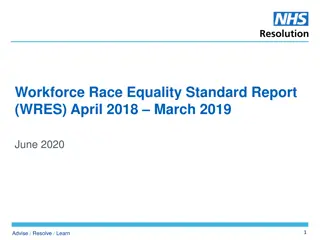Comprehensive Workforce Solutions and Training Department Strategies
Addressing clients' needs with a skill-focused approach, promoting stable employment and self-sufficiency. Director Paul Gronowski leads a team focusing on the intake process, job placement preparation, and creating a strong workforce program through collaboration and engagement. Strategies include intake assessments, comprehensive skill development, and job retention services.
Download Presentation

Please find below an Image/Link to download the presentation.
The content on the website is provided AS IS for your information and personal use only. It may not be sold, licensed, or shared on other websites without obtaining consent from the author. Download presentation by click this link. If you encounter any issues during the download, it is possible that the publisher has removed the file from their server.
E N D
Presentation Transcript
WORKFORCE SOLUTIONS AND TRAINING DEPARTMENT DIRECTOR PAUL GRONOWSKI, CWDP, CCAP
CLIENTS, PROGRAM, AND PRACTICE TO PROMOTE STABLE EMPLOYMENT AND SELF-SUFFICIENCY The Intake Process Address their Needs with a comprehensive skill-focused approach Prepare clients for successful job placement Strong leadership and staff External engagement with employers Collaboration among Workforce Programs Community Engagement Job Retention Services
THE INTAKE PROCESS Focus on the elements of intake assessments Use of multiple data collection methods Multiple uses for the information collected during the intake process Help Identify successfully Enrollees See Appendix A for an Assessment Sample See Appendix A for an Assessment Sample
ADDRESS THEIR NEEDS WITH A COMPREHENSIVE SKILL-FOCUSED APPROACH Address their right-now economic and Psychosocial Needs Improve their Financial Well-Being Combine Technical with Soft Skills Take Families into consideration Provide comprehensive services beyond program completion See Appendix D for Poverty and Wage Calculator See Appendix D for Poverty and Wage Calculator
PREPARE CLIENTS FOR SUCCESSFUL JOB PLACEMENT Personal Effectiveness Personal Effectiveness Skills (PES) training Skills (PES) training Specialized Skill Specialized Skill Training Training Placement strategies Placement strategies with work with work- -based learning learning Respond to the Respond to the changing needs of changing needs of clients and the clients and the economy economy based Self-Management Job Performance Team Performance Asset to Organization See Appendix B and C for skill training examples See Appendix B and C for skill training examples
A balance of compassion, empathy, and professionalism Work with synergy across programs to achieve better outcomes (standards vs. consistency) STRONG LEADERSHIP AND STAFF Operate with integrity, delivering honesty and fairness to drive success Evaluate staff performance
EXTERNALENGAGEMENT WITH EMPLOYERS Meet the changing Meet the changing needs of the clients needs of the clients Respond to Respond to changing demand in changing demand in the workforce the workforce Dedicated program Dedicated program staff to foster staff to foster employer employer engagement engagement Provide business Provide business services to engage services to engage employers employers
COLLABORATION AMONG WORKFORCE PROGRAMS Collaboration of services To gain high-quality work-related skills To develop additional skill training To gain additional work or experience Collaboration of services
COMMUNITY ENGAGEMENT Partner with community organizations Coordination of public services Intentional interactions between communities and public decision- makers. Build deeper, stronger, and more trusting relationships between public organizations and communities.
Monthly follow-up with clients Assist clients with challenges in maintaining employment stability Assist clients in skill building to promote career advancement Providing clients with Earned Income Tax information Providing employers with Work Opportunity Tax process Comprehensive elevation = Process improvement to the system JOB RETENTION SERVICES
PROGRAM QUANTITATIVE AGGREGATE DATA 2022 DATA 230 Census Number - Unduplicated clients (Program Life 2019) 89.3% of Unsubsidized Jobs > Poverty 96.9% of Unsubsidized Jobs > Minimum Wage (Our Minimum wage is $8.00) 97.8% Job Retention Rate - clients Maintaining Employment 11.1% of Benefits Increased (Increased Wages, Increased Hours, or added benefits package) Median Earnings 2nd Quarter after Exit $11,534.79 Aggregate Payroll Taxable Income for Active Rolling clients = $696,947.14 ROI - $1 invested (Funding) = Return (Participant Income) $5.19
2022 PROGRAM OUTCOMES Current Business Sites for Programs 2,042 1,486 Total Business Sites Total Unique Businesses Area TOTALS % 57.07% 23.39% 8.99% 9.32% 1.24% 100.00% Job Leads Job Searches Update Resume Applications Assistance Practice Interviews Totals 876 359 138 143 19 1,535




